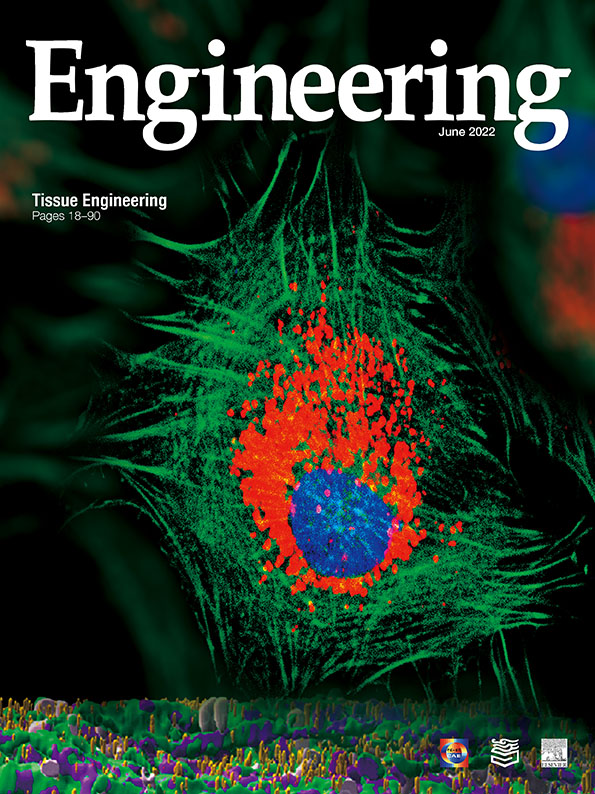
In recent years, biomaterials-tissue engineering research and technological innovation have developed rapidly, especially in the areas of biomimetic tissue engineering, microenvironment regeneration, nanotechnology, and molecular drug delivery. For this issue, we have invited national and international experts to submit their articles on this topic.
In their review, Jiandong Ding’s team reveals the factors that influence the cell microenvironment, which is a central topic in the fields of cell biology, biomaterials, tissue engineering, and regenerative medicine. The microenvironment of the cell consists of not only the surrounding cells and soluble factors, but also the cell’s extracellular matrix (ECM) and any nearby external biomaterials involved in tissue engineering and regeneration. The review focuses on the biomaterial-related cell microenvironment, and the authors introduce this topic via six aspects: ① chemical composition of materials, ② material dimensions and architecture, ③ material-controlled cell geometry, ④ effects of material charges on cells, ⑤ matrix stiffness and biomechanical microenvironment, and ⑥ surface modification of materials.
Richard D. Weisel holds the restoration of ventricular function after a myocardial infarction, which remains an elusive goal for cardiac surgeons. The article suggests that the injection of a higher dose of autologous CD133+ cells might improve the recovery of ventricular function. Understanding both engineering concepts and biological processes makes it possible to integrate engineering and biology to restore normal cardiac function.
Articular cartilage (AC) defects are common in the knees of young and physically active patients. Ling Qin’s team summarizes the challenges encountered in functionalized hydrogel-based strategies for AC tissue engineering, both in vivo and in vitro, and identify future directions in clinical translation.
In their review, Bin Yu’s team discusses recent progress in spinal cord injury (SCI) repair based on the lesion microenvironment, neural circuits, and biomaterial scaffolds. For future research, they propose several important directions including targeted-microRNA therapy, blood vessel interventions, and multiple treatment combinations. In future, modified biomaterials with stem cells, cytokines, drugs, or microRNAs will be implanted into the injury area to improve the lesion microenvironment and support axon regeneration after SCI. This review facilitates the development of efficient therapies to achieve sustained nerve regeneration and functional recovery after SCI.
Due to its unique advantages, which include minimal invasiveness and relative clinical safety, phototherapy is considered to be a promising approach for cancer treatment. The emergence of lightresponsive nanomaterials offers a possible means of achieving enhanced phototherapy potency. In their review, Jin Chang’s team summarizes the progress in and biomedical applications of lightresponsive nanomaterials for cancer therapy. Their review aims to demonstrate the significance of light-responsive nanomaterials in cancer therapy and to provide strategies to expand the applications of phototherapy.
Macroencapsulation has been widely used in cell therapy due to its capability to provide immune-privileged sites for implanted allogeneic or xenogeneic cells. Zhen Gu’s team surveys innovative platforms and approaches, as well as translation outcomes, for advancing the performance and applications of macrodevices for cell-based therapies. Their review includes discussion and a critique regarding future opportunities and challenges.
Compared with traditional medical products, tissue-engineered medical products (TEMPs) have distinct characteristics that provide unique benefits for the repair and regeneration of damaged or diseased tissues or organs. As discussed in the opinion paper by Peng Zhao’s team, process from basic research on a TEMP to its successful clinical translation goes through multiple phases, including designation, classification, and regulation; preclinical evaluations; manufacturing; quality system regulation; clinical evaluation; and post-market evaluation.
It is our sincere hope that the publication of this special issue can promote innovation and transformation in the field of biomaterials-tissue engineering.













 京公网安备 11010502051620号
京公网安备 11010502051620号




